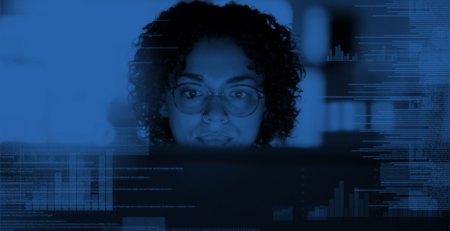ChatGPT – Take It or Leave It
Have you happened upon ChatGPT? It’s likely that when you first give it a try, you’ll imagine yourself delivering in record time those business strategies and research reports that your boss has been asking for. But, always consider the risks when using a new online research tool.
What is ChatGPT?
In a word—cool.
ChatGPT is a natural language processing (NLP) tool or generative AI chatbot from OpenAI. The technology uses GPT-3, an advanced language model using algorithms to generate text responses when a user types a question into the site. Investors are giddy about its lucrative potential to bring about a marked transformation on the internet.
First released just last month, ChatGPT has wowed users visiting the website to try it out. The chatbot will answer your questions coherently and even generate working python code. The algorithm consumes data from the web and spits it back out in an intelligibly consumable way. In its short lifespan, ChatGPT has inspired developers to build upon its capabilities to update other forms of complex data based on inputted text.
There’s a Catch
As cool as it is, the chatbot makes mistakes—cue sad trombone sound effect.
It’s just not the same as human interpretation, learning, and understanding of language. By relying on algorithms, ChatGPT can’t match the way we are able to make decisions and problem-solve based on the meaning behind words when they are connected in specific ways. Human guidance is still needed to leverage the tool efficiently.
As you play around with ChatGPT, you may run across some instances where your questions are misunderstood or result in extraneous essay-length responses. Until these mix-ups are ironed out, it’s unlikely that industry will exponentially build upon this foundational technology. However, the potential to disrupt search engine competition as we know it today is knocking at the door.
Leveraging ChatGPT for OSINT
You guessed it—ChatGPT can be used for collecting publicly available information (PAI) if used with discretion and only in conjunction with appropriate OPSEC and supplementary tools and applications integrated into your managed attribution platform.
In certain scenarios, the automated search capability can come in handy. While ChatGPT types up a response to your question, you are free to proceed with manual searching in another window—one point for efficiency. It may take some practice to get the most out of your queries by massaging keyword phrases and getting creative.
Use ChatGPT as an idea generator. If you find yourself struggling to make the connections in your data or have exhausted your analysis, just ask ChatGPT for advice. You may just find exactly what you are looking for.
As always, having more tools available to OSINT researchers opens up potential for their misuse by hackers and bad actors. As AI systems get “smarter”, social engineering complexity and risks increase. Effective online operations require more than just highly capable technical solutions—they also require highly capable people. Researchers need to effectively manage online attribution across the internet to support mission operations.
When AI Isn’t the Answer
As mentioned earlier, OPSEC is a key component to successful OSINT missions. You may fare well when using these added tools for general research and writing support. However, the internet data driving the chatbot’s responses is not live data. To get real-time results, you must perform real-time research.
Never enter sensitive data into an application such as ChatGPT. The data you submit is stored, analyzed, and used in ways you can’t anticipate.
To add to its unreliability, we tried to access the site on Friday and received a witty, yet unfortunate, message that ChatGPT systems are at capacity. The site gives you the option of entering your email address to be notified when ChatGPT is back online.
If nothing else, ChatGPT shows us what’s possible.









